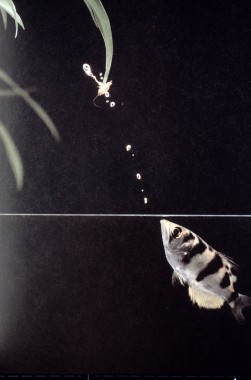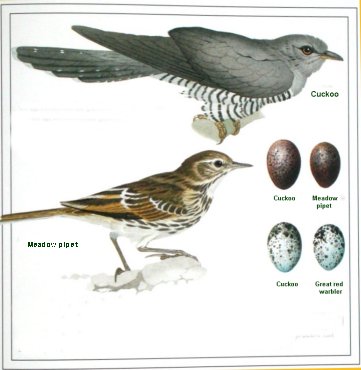

After Whitfield: De evolutie van het leven
(1994)
A nice example of hereditable behaviour is shown by this little fish, which has the ability to shoot an insect out of the air or from a branch with a drop of water. And so he can eat it.
It is difficult to imagine how this behaviour could develop. Perhaps this was the way: In time of shortage of food, some fishes had the habit to frighten their enemy by blowing bubbles on the surface of the water. From time to time it could happen that by chance an insect was brought down. The fishes showing this behaviour had more food than the other ones and could propagate better. If such a development has started, natural selection is going to work and the action is perfected more and more. But, whether this is really the way they have learned it? ... I don't know.
The origin of this adaptation can be imagined as follows: Several cuckoos from a population lay their eggs in the nest of e.g. a Meadow pipet. The eggs resembling most closely the eggs of the pipet have the best chance to be accepted by the 'host'. The brooding success of the cuckoo which has laid these eggs will thus be greater than that of the other cuckoos. The characteristic stays then in the gene pool of the population and the resemblance of the eggs with those of the Pipet will on average increase. After a number of generations the eggs of the cuckoo will be nearly identical to those of the Pipet (but bigger).
Know more?
The cuckoo